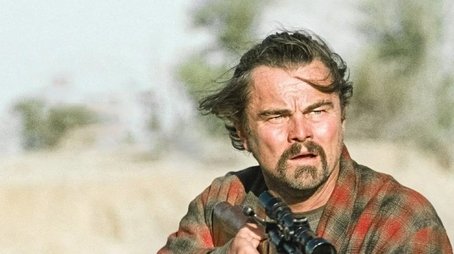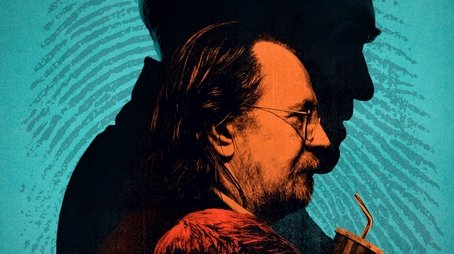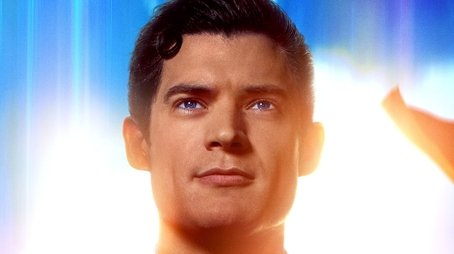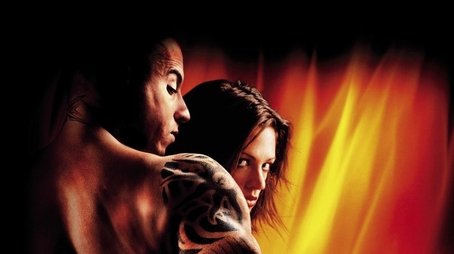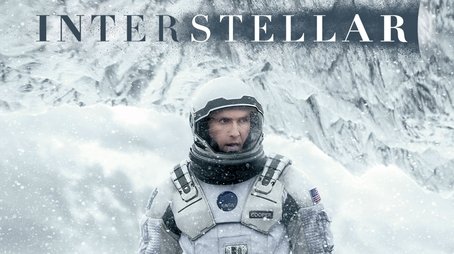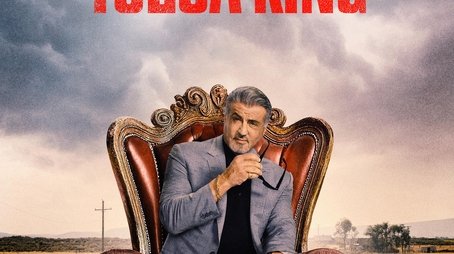Endings Explained
Get detailed explanations of how movies and TV shows end. Warning: Contains spoilers!
How does it end?
⚠ Spoiler – click to reveal
The ending of the 2025 Marvel Zombies TV series shows the survivors successfully stopping the superpowered zombie outbreak, but at great cost. Key characters face dire fates, with some sacrificing themselves to end the plague, while others are left to rebuild in a devastated world.
The final episode unfolds with the survivors--led by characters like Blade Knight, Ms. Marvel, Shang-Chi, and others--making a desperate push to stop the zombie Avengers who have ravaged the Earth. The scene opens amid a ruined cityscape, where the undead Avengers, including zombified versions of Hawkeye, Scarlet Witch, and Abomination, are consolidating their power. The survivors navigate through this chaos, fighting off hordes of infected superhumans.
Blade Knight emerges as a pivotal figure, wielding his unique combat skills to carve a path through the undead. Ms. Marvel and Shang-Chi coordinate to protect the group and find a way to neutralize the infection. The tension escalates as they reach the source of the outbreak, a facility where the virus originated and where the zombified Scarlet Witch is attempting to amplify the plague.
In a tense confrontation, the survivors manage to isolate Scarlet Witch and contain her, preventing the further spread of the virus. However, this victory comes at a cost: several main characters sustain fatal injuries. Blade Knight sacrifices himself to hold off a massive wave of zombies, allowing the others to escape. Ms. Marvel is severely wounded but survives, symbolizing hope for the future.
The final scenes show the survivors regrouping in a safe zone, reflecting on the devastation and the loss of the original Avengers, who were among the first to fall and turn. The series closes on a somber but hopeful note, with the survivors determined to rebuild and prevent such a catastrophe from happening again.
Each main character's fate is clear:
- Blade Knight dies heroically in battle, ensuring the survivors' escape.
- Ms. Marvel survives but is gravely injured.
- Shang-Chi remains alive, taking a leadership role in the aftermath.
- Scarlet Witch is contained but remains a looming threat.
- Other zombified Avengers remain defeated or contained, ending their reign of terror.
This ending emphasizes the themes of sacrifice, resilience, and the cost of heroism in the face of overwhelming darkness.
How does it end?
⚠ Spoiler – click to reveal
The ending of The Fantastic Four: First Steps (2025) shows the team luring Galactus into a trap in Times Square using their baby Franklin as bait. After a fierce battle, Sue Storm pushes Galactus through a portal but dies from the effort. Reed Richards tries to revive her, but it is Franklin who uses his cosmic powers to bring Sue back to life. Earth is saved, and the film ends with a hopeful note about the family's future and Franklin's immense power.
In the final sequence, the Fantastic Four prepare a global effort to trap Galactus, the planet-devouring cosmic entity, in Times Square. They use Franklin Richards, the infant son of Reed and Sue, as bait to lure Galactus near a portal Reed has created. The plan is for Galactus to be sucked through this wormhole to another part of the universe, sparing Earth from destruction.
As Galactus approaches the portal, he realizes the team has moved Franklin, disrupting the plan. A battle ensues between the Fantastic Four and Galactus. Despite their efforts, they cannot stop him outright. At the critical moment, the Silver Surfer, who had been working with Galactus to protect her own planet, intervenes and helps Sue Storm push Galactus into the portal.
Sue uses the full extent of her powers to force Galactus through the wormhole, but the exertion is fatal. She collapses, appearing dead. Reed Richards attempts to revive her but fails. Franklin, crying and reaching out to his mother, is placed on Sue's chest. Suddenly, Franklin's hands glow with cosmic energy, and he revives Sue, who begins to breathe again. Sue later tells Reed that Franklin's powers are far greater than theirs, hinting at his cosmic potential.
The fate of the main characters at the end is as follows:
- Sue Storm: Dies momentarily after pushing Galactus through the portal but is revived by Franklin's powers.
- Reed Richards: Survives and continues to lead the team, mourning Sue briefly before her revival.
- Johnny Storm and Ben Grimm: Participate in the battle and survive.
- Franklin Richards: Revealed as a powerful cosmic being capable of reviving his mother and potentially more.
The film closes with a mid-credits scene set four years later, showing Sue reading to Franklin in the Baxter Building. A mysterious hooded figure, later revealed to be Doctor Doom, approaches Franklin, holding a Doom-shaped mask, setting up future conflicts.
This ending unfolds scene by scene:
- The team coordinates a worldwide effort to build a trap for Galactus, culminating in Times Square.
- Reed's teleportation plan to move Earth fails due to sabotage, leaving the portal in Times Square as the last hope.
- Johnny confronts Shalla-Bal, the Silver Surfer, playing messages from destroyed planets to sway her, but she flees.
- The Fantastic Four lure Galactus using Franklin as bait.
- The battle with Galactus ensues; the team struggles to contain him.
- Sue uses her powers to push Galactus into the portal, sacrificing herself.
- Reed tries to revive Sue but fails.
- Franklin's cosmic powers revive Sue, restoring her to life.
- The team is safe, but the threat of future challenges looms.
- The mid-credits scene introduces Doctor Doom's presence in Franklin's life.
This detailed ending highlights the themes of family, sacrifice, and the emergence of new cosmic powers within the Fantastic Four universe.
How does it end?
⚠ Spoiler – click to reveal
The ending of Alien: Earth (2025) shows the space vessel Maginot crash-landing on Earth, where a young woman named Wendy and a group of tactical soldiers confront the planet's greatest threat--an alien species connected to hybrid beings. The story concludes with Wendy, a hybrid herself, facing the consequences of this encounter, while the fate of the other main characters unfolds amid revelations about corporate conspiracies and the nature of human immortality.
In the final scenes of Alien: Earth, the narrative unfolds as follows:
The Maginot crash-lands on Earth, setting the stage for the climax. Wendy, revealed to be the first hybrid--part human, part synthetic--emerges as the central figure confronting the alien threat. Alongside her are tactical soldiers, including Kirsh, who have been navigating the dangers posed by the alien species and the machinations of powerful corporations such as Weyland-Yutani and the Prodigy Corporation.
As the group explores the crash site and surrounding areas, they uncover the true nature of the alien threat: a species capable of invading and controlling hosts through their eyes, a terrifying form of mind control. This discovery heightens the stakes, as the characters realize the threat is not just physical but psychological.
Wendy's hybrid nature becomes crucial in the confrontation. Her unique biology allows her to interact with the alien species in ways others cannot, positioning her as both a bridge and a battleground between humans and aliens. The tactical soldiers, including Kirsh, face casualties and moral dilemmas as they attempt to contain the threat.
The corporations' involvement is revealed to be more than incidental; they have been manipulating events to harness the alien species for their own ends, aiming to achieve immortality through cybernetic enhancements, artificial intelligence, and hybrids like Wendy. This corporate agenda adds layers of conflict and betrayal among the human characters.
In the closing moments, Wendy confronts the alien threat directly, using her hybrid abilities to neutralize it, though the cost is high. Kirsh survives but is deeply affected by the ordeal. The fate of other soldiers varies, with some perishing in the struggle.
The series ends on an ambiguous note, with Wendy's future uncertain but symbolizing a new phase in the human-alien relationship. The Maginot's crash and the events that follow suggest that Earth itself is now a battleground for these intertwined destinies of humanity, technology, and alien life.
Key points highlighted in the ending include the exploration of identity through Wendy's hybrid status, the ethical implications of corporate control over life and death, and the persistent threat of alien species that challenge human survival. The characters' fates underscore the costs of this conflict and the fragile boundary between human and alien.
This detailed narrative captures the final arc of Alien: Earth, scene by scene, focusing on the characters' actions and the unfolding story without interpretation beyond the factual events depicted.
How does it end?
⚠ Spoiler – click to reveal
The TV show The Lowdown (2025) does not have publicly available detailed plot summaries or episode-by-episode descriptions, including its ending, in the provided search results. The sources focus on the series' production, cast, premiere, and initial episodes but do not reveal the narrative conclusion or the fates of the main characters.
The first two episodes introduce Lee Raybon, a complex protagonist who is self-aggrandizing yet well-meaning, trying to fight corruption and injustice while maintaining a complicated relationship with his daughter Francis. The show is set in Tulsa, Oklahoma, and features a cast led by Ethan Hawke. However, no information about the ending or final scenes is available in the search results.
Therefore, I cannot provide a short or expanded narrative description of the ending of The Lowdown or the ultimate fate of its main characters based on the current data. If you have access to specific episodes or additional sources, I can help analyze those details.
How does it end?
⚠ Spoiler – click to reveal
The ending of One Battle After Another (2025) concludes with the ex-revolutionaries successfully rescuing Willa Ferguson, Bob Ferguson's daughter, from their resurfaced enemy, Colonel Steven J. Lockjaw. The final confrontation results in Lockjaw's defeat, and the group disbands once more, each character facing their own uncertain futures but united by the bonds rekindled through their shared ordeal.
Expanding on the ending scene by scene:
The climax begins in a remote, heavily fortified compound where Willa Ferguson is held captive. Bob Ferguson, played by Leonardo DiCaprio, leads the reunited group of ex-revolutionaries, including Sensei Sergio (Benicio del Toro), Deandra (Regina Hall), and Perfidia Beverly Hills (Teyana Taylor), as they infiltrate the enemy's stronghold. The atmosphere is tense, with the team moving cautiously through dimly lit corridors, communicating silently to avoid detection.
As they advance, flashbacks briefly intersperse, showing the history of their past battles and the personal stakes involved, especially Bob's deep paternal concern for Willa. The group encounters Lockjaw's guards, leading to a series of intense, close-quarters combat scenes showcasing each character's unique fighting skills and teamwork.
Eventually, they reach the central chamber where Lockjaw (Sean Penn) awaits, surrounded by his loyalists. A fierce confrontation ensues. Lockjaw taunts Bob, revealing his motivations rooted in vengeance and ideological conflict from their revolutionary past. The fight is brutal and emotionally charged, with Bob and Lockjaw exchanging blows and verbal barbs that reflect their complicated history.
During the battle, Sensei Sergio intervenes to protect Bob, sustaining injuries but managing to incapacitate several guards. Deandra and Perfidia coordinate to disable the compound's security systems, allowing the team to access Willa's holding cell.
Willa (Chase Infiniti) is found weakened but resolute. Her reunion with Bob is brief but poignant, underscoring the emotional core of the story. As they attempt to escape, Lockjaw makes a last desperate attempt to stop them, but Bob ultimately overpowers him, delivering a decisive blow that ends Lockjaw's threat permanently.
The film closes with the group escaping the compound as dawn breaks, symbolizing a new beginning. Each main character's fate is subtly revealed: Bob and Willa begin to rebuild their fractured relationship; Sensei Sergio recovers from his wounds, hinting at a quieter life ahead; Deandra and Perfidia part ways with the group, their roles in the revolution concluded but their spirits unbroken.
The ending emphasizes themes of loyalty, sacrifice, and the enduring impact of past conflicts on present lives, leaving the audience with a sense of closure yet acknowledging the ongoing struggles the characters face beyond the battlefield.
How does it end?
⚠ Spoiler – click to reveal
In the ending of "Slow Horses," the team faces a climactic confrontation that tests their loyalty and skills. River Cartwright, having grown into a more competent agent, plays a crucial role in the resolution. The story concludes with the team managing to thwart a significant threat, but not without personal sacrifices and revelations about their characters. Each member's fate is intertwined with their growth and the choices they make in the face of danger.
As the final episodes unfold, the tension escalates. The scene opens with River Cartwright, now more determined than ever, racing against time to save his colleagues and prevent a catastrophic event. The atmosphere is thick with urgency as he navigates through the shadows of London, reflecting on his journey from a disgraced agent to a pivotal player in this high-stakes game.
Meanwhile, Jackson Lamb, the gruff and cynical leader of the Slow Horses, is seen in his office, surrounded by the remnants of past failures. His demeanor is a mix of frustration and resolve, as he understands the gravity of the situation. He knows that the team, despite their flaws, has the potential to rise to the occasion. Lamb's internal struggle is palpable; he grapples with the weight of responsibility for his team, who have often been underestimated.
As the plot thickens, the Slow Horses regroup, each character revealing their motivations and fears. Louisa, with her sharp wit and determination, steps up, showcasing her growth as she confronts her own insecurities. The camaraderie among the team members is tested, but they find strength in their shared experiences, each character reflecting on their past mistakes and the desire for redemption.
In a pivotal scene, the team confronts the antagonist, who has orchestrated a dangerous plot. The tension is electric as they engage in a battle of wits and strategy. River, using his newfound skills, devises a plan that showcases his evolution. The stakes are high, and the emotional weight of their choices hangs in the air. Each character's fate becomes intertwined with the outcome of this confrontation.
As the climax reaches its peak, sacrifices are made. One character faces a tragic end, highlighting the harsh realities of their world. The emotional fallout is profound, with the remaining team members grappling with loss and the consequences of their actions. River, in particular, is left to reflect on the cost of their victory, feeling the burden of leadership and the lives affected by their mission.
In the aftermath, the surviving members of the Slow Horses gather, their expressions a mix of relief and sorrow. They have thwarted the immediate threat, but the victory feels bittersweet. Jackson Lamb, though gruff as ever, acknowledges the growth of his team, hinting at a newfound respect for their capabilities. River stands among them, a sense of purpose ignited within him, ready to embrace the challenges ahead.
The series concludes with a sense of ambiguity, leaving the audience to ponder the future of the Slow Horses. Each character has faced their demons, and while they have emerged victorious, the journey has irrevocably changed them. The final scene lingers on their faces, capturing the complexity of their experiences and the uncertain path that lies ahead.
How does it end?
⚠ Spoiler – click to reveal
The ending of The Terminal List: Dark Wolf concludes with Ben Edwards confronting the consequences of his transition from Navy SEAL to CIA operative, culminating in a tense showdown that seals his fate and sets the stage for the original The Terminal List series.
In detail, the final episodes unfold as follows:
The series builds toward Ben Edwards grappling with the moral and psychological toll of his covert CIA missions after being discharged from the SEALs. As the story progresses, Edwards becomes increasingly entangled in clandestine operations that blur the lines between loyalty and betrayal.
In the penultimate scenes, Edwards faces mounting pressure from his CIA handlers and adversaries, forcing him into a critical decision point. His relationships with former teammates, including James Reece and Raife Hastings, become strained as secrets and hidden agendas surface.
The climax occurs during a covert operation where Edwards must choose between completing a mission that compromises his values or defying orders to protect those he cares about. This confrontation leads to a violent encounter that leaves Edwards severely wounded and isolated.
The final moments depict Edwards in a vulnerable state, reflecting on the cost of his choices and the loss of his former identity as a SEAL. His fate is left somewhat ambiguous but clearly marked by sacrifice and the irreversible transformation into the darker operative seen in The Terminal List.
James Reece appears briefly, underscoring the connection between their stories and foreshadowing the deadly conflict that unfolds in the original series. Raife Hastings and other key characters either survive with altered loyalties or meet tragic ends, emphasizing the high stakes and human cost of their shadowy world.
This ending scene by scene:
-
CIA Pressure and Moral Conflict: Edwards is shown navigating the CIA's secretive operations, increasingly conflicted by the orders he receives and the collateral damage caused. His internal struggle is palpable as he questions the cost of his new role.
-
Strained Relationships: Interactions with Reece and Hastings reveal tension and mistrust. Edwards' secrecy and the dangerous nature of his work create rifts, highlighting the personal sacrifices behind the espionage.
-
Critical Mission Decision: Edwards is tasked with a mission that challenges his ethics. The scene is tense, with Edwards weighing obedience against conscience, culminating in a choice that defies his handlers.
-
Violent Confrontation: The mission leads to a firefight or covert clash where Edwards is injured. This scene is intense and raw, showing the physical and emotional toll of his path.
-
Reflection and Ambiguity: In the aftermath, Edwards is alone, wounded, and reflective. The camera lingers on his face, conveying loss and transformation. The narrative leaves his ultimate fate open but suggests he is forever changed.
-
Foreshadowing Reece's Role: A brief scene with James Reece ties the prequel to the original series, hinting at the future conflict and Edwards' role in the conspiracy that Reece uncovers.
-
Fates of Other Characters: Raife Hastings survives but is shown to have shifted allegiances or become disillusioned. Other operatives either fall victim to the dangerous world they inhabit or disappear into the shadows, underscoring the perilous nature of their lives.
This detailed ending portrays the human cost of covert warfare and the transformation of Ben Edwards from a decorated SEAL to a haunted CIA operative, setting the narrative foundation for the events of The Terminal List.
How does it end?
⚠ Spoiler – click to reveal
The ending of Gen V season 1 culminates with Cate convincing Sam to free the imprisoned Supes in the Woods, sparking a violent uprising against humans on the Godolkin University campus. Despite efforts by Emma, Marie, and Jordan to stop the chaos, the campus descends into bloodshed. The conflict ends abruptly when Homelander arrives, sides with Cate and Sam, and fatally attacks Marie, leaving the main heroes captured and the campus in turmoil, setting up a tense cliffhanger for season 2.
The finale unfolds with Cate persuading Sam to help her break the young Supes out of the Woods, a secret lab where they were imprisoned and experimented on. Cate delivers a rousing speech to the inmates, inciting them to rise up against humans, whom they see as inferior. This sparks a violent rampage across the campus, with the freed Supes killing any humans they encounter.
Emma, Marie, and Jordan rush to intervene but arrive too late to prevent the uprising. Emma finds Sam in the performing arts center and tries to reason with him, but Sam, emotionally numb due to Cate's powers, rejects her and joins the violent revolt. Sam clashes with Andre, who has just visited his hospitalized father, Polarity. Andre struggles but manages to use his magnetism to grab a taser and subdue Sam.
Meanwhile, Ashley Barrett from Vought offers Marie a place in the Seven if she kills Cate to stop the chaos, promising a reunion with Marie's sister as incentive. Marie confronts Cate but does not intend to kill her. During a fight involving Jordan and other ex-Woods inmates, Cate approaches Jordan, prompting Marie to panic and accidentally sever Cate's arm below the elbow.
As the battle continues, Cate manipulates Dean Shetty into slitting her own throat, removing a major antagonist. Marie uses the trauma of accidentally killing her parents to gain better control of her powers, helping to subdue the rogue Supes. Jordan demonstrates genuine heroism by saving humans, contrasting with earlier PR-spun heroics.
Just as Marie and Jordan celebrate their victory, a distraught Cate approaches, attempting to compel Jordan to fight Marie. Instead, Marie blows off Cate's arm, escalating the conflict.
Suddenly, Homelander arrives, summoned by Ashley. He lands dramatically in front of his statue on campus and immediately asserts dominance. When Marie tries to speak with him, he warns her to stop and then uses his heat vision to strike her in the stomach, cutting to black on this shocking moment.
The final scenes show Marie, Andre, Jordan, and Emma in a sterile, doorless medical room, apparently in custody but alive. Their fate is uncertain, trapped in a clinical environment with no clear escape, hinting at further developments in season 2.
In summary, Cate and Sam lead a Supes revolution fueled by supremacist ideology, Homelander aligns with them, and the main heroes are captured, leaving the campus in chaos and the story poised for continuation. Marie survives Homelander's attack, impressing Andre, but the group's imprisonment raises new questions about their future.
How does it end?
⚠ Spoiler – click to reveal
In the 2025 film Superman, the ending shows Superman defeating the villainous clone Ultraman and Lex Luthor's schemes being exposed. Lex is arrested, Ultraman is trapped in a black hole, and the Engineer is taken into custody. Superman embraces his humanity by replacing a Kryptonian message with one from his Earth parents. Supergirl arrives to retrieve Krypto, and the world once again accepts Superman as a hero.
The ending unfolds with Superman confronting the final threats orchestrated by Lex Luthor. After a fierce battle, Superman faces Ultraman, a clone created by Luthor from a single hair of Superman, designed to kill him. Ultraman is controlled by Luthor through drone cameras. Superman calls upon his superpowered dog, Krypto, who destroys these cameras, allowing Superman to fight Ultraman fairly. In a decisive moment, Superman sends Ultraman flying into a black hole that had opened beneath Metropolis due to Luthor's out-of-control pocket universe technology. Ultraman is trapped there, effectively neutralized.
Meanwhile, the Engineer, an ally of Luthor who had tried to kill Superman by forcing nanites down his throat, loses control and consciousness after Superman flies high above Earth's atmosphere. She survives but is taken into custody.
Lex Luthor's plot to discredit and kill Superman is fully exposed by the Daily Planet reporters, with help from Eve Teschmacher. They reveal Luthor's manipulation of the Boravian conflict and his use of a stolen Kryptonian message urging Superman to conquer Earth. This evidence leads to Luthor's arrest and his imprisonment, presumably at Belle Reve, ending his reign of terror.
In the final moments, Superman replaces the original Kryptonian message from his birth parents, Jor-El and Lara Lor-Van, with a recording of his adoptive Earth parents, Ma and Pa Kent. This symbolizes his choice to embrace his humanity and protect Earth rather than rule it. Supergirl arrives to retrieve Krypto, signaling a continuation of the legacy and support for Superman. The world, having seen the truth, once again embraces Superman as a hero despite Luthor's attempts to paint him as a villain.
The fates of the main characters at the end are:
- Superman (Clark Kent): Victorious, embraces his human upbringing, and is accepted as a hero.
- Lex Luthor: Exposed, arrested, and imprisoned.
- Ultraman: Trapped in a black hole, effectively neutralized.
- The Engineer (Angela Spica): Taken into custody but survives.
- Krypto: Retrieved by Supergirl, continuing to support Superman.
This ending ties up the major conflicts and sets the stage for future stories in the new DC Universe.
How does it end?
⚠ Spoiler – click to reveal
In the ending of "Alice in Borderland," Arisu and Usagi confront the final game, which is a deadly showdown against the game's master, known as the King of Hearts. After a tense and strategic battle, Arisu manages to outsmart the King, leading to his victory. This victory reveals the truth about the games and the nature of their existence. The characters who survive, including Arisu and Usagi, are ultimately transported back to the real world, where they awaken in a hospital, suggesting they have returned to their lives. The series concludes with a sense of hope and the possibility of a new beginning.
As the final episode unfolds, the atmosphere is thick with tension and uncertainty. Arisu, Usagi, and their remaining allies find themselves in a grand, ominous arena, the setting for the ultimate game against the King of Hearts. The arena is stark, with towering walls and a chilling silence that amplifies the stakes of the game. The players are aware that this is not just another game; it is a fight for their lives and a chance to escape the twisted world they have been trapped in.
The game begins with the King of Hearts, a charismatic yet ruthless figure, who taunts Arisu and Usagi, challenging their resolve and intelligence. The rules are clear: they must outwit him in a game of strategy and survival. As the game progresses, Arisu's mind races, recalling the lessons learned from previous games and the sacrifices made by their friends. He feels the weight of responsibility, not just for himself but for Usagi and the memories of those who have fallen.
In a series of intense exchanges, Arisu and Usagi work together, their bond deepening as they face the King's psychological games. The King uses mind games to manipulate their fears and insecurities, but Arisu's determination shines through. He recalls the moments of camaraderie and the strength of their friendships, fueling his resolve to win. Usagi, equally fierce, stands by his side, her unwavering support a source of strength for Arisu.
As the climax approaches, the tension escalates. The King reveals his true nature, embodying the chaos and despair that the games have inflicted on the players. In a final showdown, Arisu devises a clever strategy, using the King's arrogance against him. The moment is electric; Arisu's heart races as he makes his move, and the arena erupts in chaos. With a combination of wit and bravery, he manages to outsmart the King, leading to a dramatic confrontation that culminates in the King's defeat.
With the King of Hearts vanquished, the atmosphere shifts. The oppressive weight of the games begins to lift, and the players are left in stunned silence. Arisu and Usagi share a moment of relief and triumph, their eyes reflecting the journey they have endured together. As the reality of their victory sinks in, a blinding light envelops them, signaling their return to the real world.
The scene transitions to a hospital room, where Arisu awakens, disoriented but alive. He looks around, taking in the sterile environment, and feels a rush of emotions--relief, confusion, and a sense of hope. Usagi is by his side, and they share a quiet moment, their connection stronger than ever. They have survived the horrors of the Borderland, and now they face the uncertainty of life outside the games.
As they step out into the world, the sun shines brightly, symbolizing a new beginning. The streets are bustling with life, a stark contrast to the desolation of the Borderland. Arisu and Usagi walk together, their hands brushing against each other, a silent promise of support and companionship. They are not just survivors; they are changed individuals, carrying the weight of their experiences but also the hope for a brighter future.
The series concludes with a poignant reminder of the fragility of life and the strength found in human connections. Arisu, Usagi, and the memories of their fallen friends linger in their hearts, shaping their new reality as they step forward into the unknown, ready to embrace whatever comes next.
How does it end?
⚠ Spoiler – click to reveal
At the end of Splitsville (2025), Carey, after a dramatic car crash and a chaotic journey, arrives at the lakeside home of his childhood best friend Paul and Paul's wife Julie. The film concludes with the four main characters--Carey, Ashley (Carey's wife), Paul, and Julie--entangled in the complexities of their relationships, especially around the open marriage arrangement between Paul and Julie and the fallout from Ashley's divorce request. Carey's arrival at Paul and Julie's home sets the stage for the unresolved tensions and shifting dynamics among them, with Carey physically and emotionally worn but seeking connection and resolution.
The ending unfolds as follows:
The film opens mid-journey with Carey and Ashley on a road trip, singing off-key, signaling their closeness despite underlying tensions. Suddenly, a devastating car crash occurs, abruptly shifting the tone from lighthearted to dramatic. Carey is left physically battered and emotionally adrift, wandering through the countryside in a state of confusion and distress. This journey is marked by a memorable comedic moment where Carey, covered in dirt and twigs, sprints away from Ashley after a crude joke, highlighting the film's blend of dark comedy and farce.
Carey eventually reaches the modern, architecturally striking lakeside home of his childhood best friend Paul and Paul's wife Julie. Paul and Carey share a close bond, demonstrated by Paul's casual behavior, such as checking Carey for ticks in the shower, underscoring their deep friendship. Julie and Paul reveal to Carey that they have an open marriage, where they sleep with others without asking questions, introducing the central conflict: what happens when boundaries in relationships are tested.
Ashley had already visited the house earlier to drop off her belongings, signaling the dissolution of her marriage with Carey. The four characters--Carey, Ashley, Paul, and Julie--are now caught in a complex web of emotional and sexual entanglements. The film's narrative tension revolves around Carey's involvement with Julie, which challenges the open marriage agreement and Ashley's divorce, creating a farcical yet poignant exploration of infidelity, friendship, and personal boundaries.
The final scenes do not resolve these tensions neatly but instead leave the characters in a state of flux. Carey remains physically and emotionally exhausted but has found a temporary refuge with Paul and Julie. Ashley's fate is marked by her decision to divorce Carey, and Paul and Julie's open marriage is tested by the new dynamics introduced by Carey's presence. The film closes on this ambiguous note, emphasizing the ongoing complexity of adult relationships rather than offering a tidy resolution.
In summary, the ending scene-by-scene:
- Carey and Ashley's road trip ends abruptly in a car crash.
- Carey wanders through the countryside, physically disheveled and emotionally raw.
- Carey arrives at Paul and Julie's lakeside home, where he is welcomed but confronted with the reality of their open marriage.
- Ashley has already left, having initiated divorce proceedings.
- The four characters face the consequences of their intertwined relationships, with Carey's involvement in Julie's life complicating the situation.
- The film ends with Carey seeking solace and connection, while the others' futures remain uncertain, highlighting the film's themes of friendship, infidelity, and the complexities of modern relationships.
How does it end?
⚠ Spoiler – click to reveal
Short Ending Narrative: In the climactic finale of "Demon Slayer: Kimetsu no Yaiba - Infinity Castle," Tanjiro, Nezuko, Zenitsu, and Inosuke confront the powerful Upper Moons in a fierce battle within the Infinity Castle. After intense struggles and sacrifices, they manage to defeat the formidable foes. Tanjiro, with the help of his friends and the memories of fallen comrades, finds the strength to overcome the final adversary. The film concludes with a sense of hope and resilience as the surviving characters reflect on their journey and the bonds they have forged.
Expanded Ending Narrative: As the final battle unfolds within the ever-shifting corridors of the Infinity Castle, the atmosphere is thick with tension. Tanjiro, Nezuko, Zenitsu, and Inosuke stand together, their resolve unwavering despite the overwhelming odds. The castle itself seems to pulse with a dark energy, shifting its layout as if to disorient the demon slayers.
The first scene reveals Tanjiro leading the charge, his sword gleaming with determination. He recalls the teachings of his mentor, urging him to stay focused. Nezuko, fighting alongside him, unleashes her blood demon art, creating a protective barrier around them. The duo showcases their deep bond, working in perfect harmony to fend off the relentless attacks from the Upper Moons.
Zenitsu, despite his usual cowardice, finds a moment of bravery. He taps into his Thunder Breathing techniques, striking with precision and speed. His character arc culminates here, as he fights not just for himself but for his friends, showcasing his growth throughout their journey. Inosuke, with his boar-headed ferocity, charges into battle, using his Beast Breathing style to distract and confuse their enemies, embodying the wild spirit that has always defined him.
As the battle rages on, the group faces the Upper Moons one by one. Each confrontation is brutal, with the demons displaying their terrifying powers. The animation captures the intensity of each clash, with vibrant colors and fluid movements that bring the fight to life. Tanjiro's determination shines through as he recalls the faces of those he has lost, fueling his resolve to protect his sister and friends.
In a pivotal moment, the group is separated by the castle's shifting walls, leading to individual battles. Tanjiro faces the most formidable Upper Moon, a demon whose power seems insurmountable. The fight is fierce, with Tanjiro pushed to his limits. He draws upon the memories of his family and the teachings of his predecessors, channeling their strength into his final attack. With a powerful strike, he manages to land a critical blow, showcasing his growth as a swordsman and a leader.
Meanwhile, Nezuko confronts another Upper Moon, using her unique abilities to protect her brother and fight for their shared dream of a peaceful life. Her fierce loyalty and strength are on full display, as she fights with a ferocity that surprises even her opponents.
As the dust settles, the remaining members of the group reunite, battered but unbroken. They share a moment of relief and camaraderie, acknowledging the sacrifices made along the way. The castle begins to crumble around them, a sign of their victory over the demons that once held it captive.
In the final scenes, the characters reflect on their journey. Tanjiro stands with Nezuko, looking out over the horizon, a sense of hope filling the air. Zenitsu and Inosuke join them, their bonds stronger than ever. They vow to continue fighting for a world free of demons, embodying the spirit of resilience and friendship that has defined their journey.
As the screen fades to black, the audience is left with a sense of closure for the characters, each having faced their fears and emerged stronger. Tanjiro, Nezuko, Zenitsu, and Inosuke have not only defeated their enemies but have also solidified their place as true demon slayers, ready to face whatever challenges lie ahead.
How does it end?
⚠ Spoiler – click to reveal
At the end of Weapons (2025), the mystery of the seventeen missing children culminates in a tense and unsettling confrontation at Alex Lilly's house, where the missing children and their parents are found in a catatonic state. The police officer Paul Morgan drags the drug addict James into the house after a chase, and the film closes on this eerie and unresolved note, leaving the fates of the characters and the full explanation of the disappearances ambiguous.
Expanding on the ending scene by scene:
The film's climax unfolds when James, a local drug addict who had been assaulted by Officer Paul earlier, breaks into Alex Lilly's house, suspecting it is abandoned. Inside, he discovers Alex's parents and the missing children in the basement, all in a catatonic, unresponsive state. This discovery is the first concrete lead in the case of the vanished children, revealing a disturbing and supernatural element to the mystery.
James rushes to report this to the police, hoping for a reward, but Paul spots him and pursues him into the woods. During the chase, James encounters the mysterious woman who had appeared in the nightmares of Justine Gandy and Archer Graff, two central characters deeply affected by the disappearances.
Paul catches James and handcuffs him in the police car, then drives to Alex's house to investigate further. Hours later, Paul returns to the car and drags James into the house, implying a dark turn of events but leaving the exact outcome unclear.
Meanwhile, Justine Gandy, the teacher of the missing children's class, has been struggling with her own demons--alcoholism, community suspicion, and isolation. She had been placed on leave by Principal Marcus Miller, who later appears in a bloodied, brain-dead state charging at Justine and Archer when they return to Alex's house, adding to the surreal and nightmarish atmosphere of the finale.
Archer Graff, a father desperate to find his son Matthew, has been conducting his own investigation parallel to the police. His journey ends at the same house, where the eerie tableau of the catatonic children and parents is revealed. His fate is left ambiguous, but he remains a key figure in the unfolding horror.
Alex Lilly, the only child who did not disappear, remains a silent enigma throughout the film. His family's strange condition and the locked-down house suggest he is central to the mystery, but the film does not provide a clear resolution for him by the end.
The ending is deliberately ambiguous and unsettling, with the film closing on the image of the catatonic children and parents, the mysterious woman, and the ominous actions of Paul and James. The fates of Justine, Archer, and Alex are left uncertain, emphasizing the film's themes of trauma, suspicion, and the unknowable darkness lurking beneath suburban normality.
How does it end?
⚠ Spoiler – click to reveal
The ending of Hotel Costiera (2025) reveals that Alice, the hotel owner's missing daughter, survives her ordeal. Daniel De Luca and his team successfully rescue her from the French mafia led by Laurent. The mystery of Alice's disappearance is resolved, and she is reunited safely with her father Augusto. However, the finale leaves some questions open about future conflicts and characters, including an enigmatic stranger Laurent encounters and Daniel's complicated family ties.
The ending unfolds scene by scene as follows:
The climax begins with Daniel De Luca, a former Marine turned fixer at Villa Costiera, orchestrating a daring plan to save Alice, who has been kidnapped by Laurent's French mafia gang. Alice had been mistakenly abducted instead of her sister Adele and forced to assist in a heist to steal the valuable Maria Callas necklace from the hotel itself.
Daniel, along with his trusted allies Bigné, Genny, and Tancredi, coordinate a high-stakes operation. They infiltrate the gang's hideout, using a combination of strategic planning and raw courage. The tension is palpable as they navigate through hostile territory, facing armed guards and traps.
In a pivotal scene, Daniel confronts Laurent directly. The confrontation is intense but ultimately results in Laurent's defeat. Alice is freed, visibly shaken but alive. The team quickly evacuates the location, ensuring Alice's safety.
Back at Villa Costiera, Alice is reunited with her father Augusto. The reunion is emotional, highlighting the relief and joy after weeks of uncertainty. Daniel's role as protector and fixer is affirmed, and the hotel's family is restored.
The final moments shift focus to unresolved threads: Laurent encounters a mysterious stranger whose identity is left ambiguous, hinting at future threats or alliances. Meanwhile, Daniel reflects on his own past, with a subtle nod to his estranged father, suggesting personal challenges ahead.
Genny and Daniel share a quiet moment, their chemistry evident but complicated by Daniel's guarded nature shaped by his Marine background.
The ending closes the central mystery of Alice's disappearance and rescue but deliberately leaves open the broader narrative world of Hotel Costiera, setting the stage for potential future stories.
Fates of main characters at the end:
- Alice: Rescued and safe, reunited with her father Augusto.
- Daniel De Luca: Successful in his mission, remains at Villa Costiera, facing personal and professional uncertainties.
- Augusto: Relieved father, regains his daughter and the stability of his family.
- Laurent: Defeated by Daniel's team, last seen encountering a mysterious stranger.
- Genny: Close to Daniel, their relationship is hinted to develop but remains unresolved.
- Bigné and Tancredi: Loyal allies who survive the ordeal and continue supporting Daniel.
This detailed ending resolves the immediate conflict but leaves narrative threads open, emphasizing the ongoing complexity of the characters' lives and the world around Hotel Costiera.
How does it end?
⚠ Spoiler – click to reveal
At the end of Wicked: Part Two (2025), Elphaba fakes her death by melting, deceiving everyone including Glinda. Glinda discovers the Wizard is Elphaba's father and, after arresting Madame Morrible and banishing the Wizard, takes control of Oz as the Good Witch. Meanwhile, Elphaba reunites with Fiyero, and they escape Oz together secretly, leaving Glinda unaware that they are alive.
Expanding on the ending scene by scene:
The film opens its final act with a tense press conference where Glinda, Fiyero, and Madame Morrible address the citizens of Oz. Fiyero, now captain of the guard, tries to defend Elphaba's innocence but is interrupted by the announcement of his engagement to Glinda, which shocks many, especially since Fiyero had recently left Glinda for Elphaba. This public spectacle sets the stage for the deepening conflict and personal betrayals.
Elphaba, branded an enemy of the state, continues her resistance against the Wizard's oppressive regime. She embraces her identity as the so-called Wicked Witch, fighting for the oppressed animals and people of Oz. Glinda, torn between loyalty to her friend and her role as a protector of Oz, struggles with the widening rift between them.
In a pivotal moment, Glinda discovers a green bottle that leads her to the Wizard, who breaks down emotionally upon realizing Elphaba is his daughter. This revelation explains Elphaba's unique powers, stemming from her mixed heritage. Madame Morrible's true allegiance is exposed, and Glinda arrests her, then banishes the Wizard from Oz, assuming leadership herself as Glinda the Good.
Elphaba, anticipating capture or death, stages her own demise by faking a melting death, exploiting the false belief that water kills her. This act convinces everyone, including Glinda, that Elphaba is gone. Before disappearing, Elphaba entrusts Glinda with the Grimmerie, a magical book, symbolizing trust and hope.
The film closes with Elphaba and Fiyero secretly reunited and escaping Oz together. They choose to live hidden from the public eye, leaving Glinda unaware of their survival. Glinda remains in power, carrying the burden of leadership and the loss of her friend.
Regarding the fates of the main characters:
- Elphaba survives by faking her death and escapes Oz with Fiyero.
- Fiyero survives and reunites with Elphaba, joining her in exile.
- Glinda becomes the ruler of Oz, arresting Morrible and banishing the Wizard, but remains unaware that Elphaba and Fiyero are alive.
- Madame Morrible is arrested for her betrayal.
- The Wizard is banished from Oz after his true nature and connection to Elphaba are revealed.
This ending sets up a complex future for Oz, with Glinda as its leader, Elphaba and Fiyero in hiding, and the ongoing struggle between truth, power, and friendship.
How does it end?
⚠ Spoiler – click to reveal
Short Ending Summary:
In the climax of "xXx," Xander Cage, also known as xXx, confronts the villain Yorgi and his henchmen in a high-stakes showdown. After a series of intense action sequences, Xander successfully thwarts Yorgi's plan to unleash a biological weapon. The film concludes with Xander being offered a permanent position with the NSA, which he humorously declines, opting instead for a life of adventure.
Expanded Ending Narrative:
As the film reaches its climax, Xander Cage, portrayed by Vin Diesel, finds himself in a tense standoff with Yorgi, the main antagonist, played by Marton Csokas. The setting is a remote location where Yorgi has set up his operations, and the atmosphere is charged with urgency. Xander, having infiltrated Yorgi's lair, is determined to stop the launch of a deadly biological weapon that could devastate millions.
The scene unfolds with Xander engaging in a fierce battle against Yorgi's henchmen. Utilizing his extreme sports skills, he performs daring stunts, dodging bullets and executing acrobatic maneuvers. The choreography of the fight is dynamic, showcasing Xander's agility and resourcefulness. He uses various weapons and gadgets, including a high-tech motorcycle, to gain the upper hand.
As the confrontation escalates, Xander manages to corner Yorgi, who is desperate to activate the weapon. In a tense moment, Yorgi reveals his plan to unleash chaos, believing it will lead to a new world order. Xander, however, remains resolute, countering Yorgi's ideology with his own belief in freedom and responsibility. The dialogue is charged, emphasizing the stakes of their conflict.
In a climactic showdown, Xander engages Yorgi in a final battle. The fight is intense, filled with close calls and dramatic exchanges. Ultimately, Xander outsmarts Yorgi, using a combination of brute strength and clever tactics. He manages to disarm Yorgi and prevent the launch of the biological weapon just in time, showcasing his heroism and quick thinking.
With Yorgi defeated, the authorities arrive, and Xander is hailed as a hero. The scene shifts to a celebratory atmosphere, where Xander is approached by NSA agents who offer him a permanent position within their ranks. However, in a light-hearted moment, Xander humorously declines the offer, preferring to continue his life of adventure and thrill-seeking rather than settling into a conventional job.
The film concludes with Xander riding off on his motorcycle, a symbol of his free spirit and desire for excitement. The final shot captures him speeding away, leaving behind the world of espionage and returning to his life of extreme sports and adventure.
As the credits roll, the fates of the main characters are clear: Xander Cage embraces his independence, Yorgi is apprehended and brought to justice, and the supporting characters, including Agent Augustus Gibbons, played by Samuel L. Jackson, are left to reflect on the events that transpired. The film ends on a note of exhilaration, celebrating the thrill of adventure and the triumph of good over evil.
How does it end?
⚠ Spoiler – click to reveal
At the end of Interstellar, Cooper sacrifices himself to ensure the success of the mission, entering a black hole to send data back to Earth. He is later rescued and finds himself in a futuristic space station, where he reunites with an elderly Murph, who has solved the gravity equation. Cooper then decides to search for Brand, who is on a habitable planet.
In a more detailed narrative, the climax of Interstellar unfolds as Cooper, played by Matthew McConaughey, and the remaining crew aboard the Endurance face the daunting task of entering the black hole, Gargantua. Cooper realizes that the only way to transmit the crucial data needed to save humanity is to sacrifice himself. He detaches from the ship, plunging into the black hole, where he experiences a surreal journey through the tesseract--a five-dimensional space that allows him to interact with different moments in time.
Inside the tesseract, Cooper sees various moments from his daughter Murph's childhood, and he realizes he can communicate with her through gravitational waves. He uses the watch he left her as a child to send her the data needed to solve the gravity equation, which is essential for humanity's survival. The scenes are filled with emotional weight as Cooper watches Murph grow up, feeling the distance and time that separates them.
After transmitting the data, Cooper is ejected from the tesseract and finds himself floating in a hospital bed on a massive space station, Cooper Station, named after his daughter. The station is a cylindrical habitat that simulates Earth's environment, showcasing humanity's survival in space. Cooper is greeted by a nurse who informs him that he has been rescued and that Murph is still alive.
Cooper is then taken to see Murph, who is now an elderly woman, surrounded by her family. The reunion is poignant, filled with unspoken love and sacrifice. Murph, played by Ellen Burstyn, urges Cooper to leave and find Brand, who is on Edmunds' planet, preparing to establish a new colony for humanity. Murph tells him that he has to go, as she has lived her life and he must now live his.
The film concludes with Cooper stealing a spacecraft to search for Brand, played by Anne Hathaway, who is alone on the habitable planet, ready to start a new life for humanity. The final scenes show Cooper setting off into the unknown, determined to reunite with Brand and continue the mission of ensuring humanity's future. The screen fades to black, leaving the audience with a sense of hope and the enduring bond between Cooper and his daughter, as well as the ongoing quest for survival in the universe.
How does it end?
⚠ Spoiler – click to reveal
At the end of The Dark Knight, Batman takes the blame for Harvey Dent's crimes to protect Dent's legacy. Harvey, now the vengeful vigilante Two-Face, is killed by Batman. The film concludes with Batman becoming a fugitive, while Commissioner Gordon vows to uphold the truth about Dent's heroism.
As the climax of The Dark Knight unfolds, we find ourselves in a tense showdown at the Gotham City penthouse where Harvey Dent, now transformed into the vengeful Two-Face, confronts Commissioner Gordon and Batman. The atmosphere is thick with tension as Dent, disfigured and consumed by rage, holds a gun to the head of a mobster, demanding to know the fate of his kidnapped fiancée, Rachel Dawes. The room is dimly lit, shadows dancing across the walls, reflecting the turmoil within Dent.
In a desperate attempt to save the hostages, Batman intervenes, urging Dent to reconsider his path of vengeance. However, Dent's mind is clouded by grief and anger, and he lashes out, revealing his twisted sense of justice. The emotional weight of the moment is palpable as Batman tries to reach the man Dent once was, but the darkness has taken hold.
The scene shifts to a chaotic confrontation at a warehouse where the Joker has orchestrated a deadly game involving two ferries filled with civilians. Each ferry is rigged with explosives, and the passengers must decide whether to blow up the other to save themselves. The Joker's sadistic plan is a test of morality, pushing the limits of human nature. As the clock ticks down, the tension escalates, and the passengers grapple with their choices, revealing the fragility of societal order.
Meanwhile, Batman races against time to stop the Joker, who has been orchestrating chaos throughout Gotham. The stakes are high, and the city is on the brink of collapse. In a pivotal moment, Batman manages to track down the Joker, leading to a fierce confrontation. The Joker, reveling in the chaos he has created, taunts Batman, challenging his moral code.
As the climax reaches its peak, Batman learns of Dent's fate and rushes to save him. However, he arrives too late. Dent, in a fit of rage, confronts the Joker, who has manipulated him into becoming a monster. In a tragic turn of events, Dent is mortally wounded, and Batman is forced to confront the consequences of their choices.
In the aftermath, Batman makes a heart-wrenching decision. To protect Dent's legacy as Gotham's White Knight, he takes the blame for Dent's crimes, including the murders committed by Two-Face. This act of sacrifice is a testament to Batman's commitment to the greater good, even at the cost of his own reputation. The emotional turmoil is evident as he grapples with the weight of his decision, knowing that he must become the villain in the eyes of the city he has sworn to protect.
The film concludes with Commissioner Gordon delivering a poignant monologue, reflecting on the sacrifices made and the darkness that has enveloped Gotham. He vows to uphold the truth about Dent's heroism, even as Batman becomes a fugitive, hunted by the very city he sought to save. The final scene captures Batman, alone in the shadows, embodying the burden of his choices and the ongoing struggle between light and darkness.
In the end, Harvey Dent is dead, consumed by his own vengeance; Batman is now a hunted man, taking on the mantle of the villain to preserve the hope that Dent once represented; and Commissioner Gordon stands as a beacon of truth, determined to honor Dent's legacy while grappling with the moral complexities of their fight against crime. The film closes on a haunting note, leaving the audience to ponder the cost of heroism and the thin line between good and evil.
How does it end?
⚠ Spoiler – click to reveal
The ending of Relay (2025) shows Ash alerting his friend Wash and the police, who arrive to arrest Sarah and Dawson's group. Ash survives the ordeal and offers to help Wash, the only other ally he trusts, as the film closes on this note of cautious survival and justice served to the corrupt parties.
In the final sequence of Relay, the tension reaches its peak with a series of carefully orchestrated moves and betrayals. Ash, the secretive fixer who operates through a relay service to protect whistleblowers, has been working with Sarah, a supposed whistleblower targeted by a corporate surveillance team led by Dawson.
The climax begins as Ash realizes Sarah is not the ally he thought she was. She is revealed to be a corporate plant hired by Optimo Pharmaceutical to expose Ash and retrieve incriminating documents. This betrayal shatters Ash's carefully maintained system of anonymity and trust, especially since he had begun to form a genuine, though manipulative, bond with Sarah.
Sarah arranges a final handoff of documents, ostensibly to protect Ash from Dawson's team, but it is actually a trap. Ash, understanding her deception, rushes to a concert hall where the handoff is to occur. The scene unfolds with Ash navigating through the crowd, sounding a fire alarm to create chaos, and attempting to save Sarah from Dawson's group. Despite the danger, Ash reveals his real name to Sarah, breaking his usual anonymity in a moment of vulnerability.
As the confrontation escalates, Ash contacts Wash, a trusted ally and New Jersey detective who has been a mentor figure. Wash and the police arrive just in time to arrest Sarah and Dawson's team, ending the immediate threat. Ash survives the ordeal, and the film closes with him offering to assist Wash, signaling a tentative hope for justice and survival in a bleak world where corruption often prevails.
The fates of the main characters at the end are:
- Ash: Survives the confrontation, maintains his role as a fixer but with a renewed sense of caution and connection through Wash.
- Sarah: Arrested along with Dawson's group, exposed as a corporate plant rather than a true whistleblower.
- Dawson and his team: Arrested by the police, their campaign of intimidation and surveillance thwarted.
- Wash: Emerges as Ash's ally and a symbol of law enforcement's intervention in the corrupt corporate world.
This ending emphasizes themes of betrayal, survival, and the fragile nature of justice in a world dominated by corporate power and surveillance. The characters' fates reflect the film's bleak but realistic portrayal of whistleblowing and the costs of fighting systemic corruption.
How does it end?
⚠ Spoiler – click to reveal
In the ending of "Tulsa King," Dwight "The General" Manfredi confronts the challenges of his new life in Tulsa, leading to a violent showdown with his enemies. The series culminates in a tense standoff that tests loyalties and reveals the true nature of the characters involved. Dwight's journey comes full circle as he embraces his role as a leader, while the fates of his allies and adversaries are sealed in the chaos of the final confrontation.
As the final episode unfolds, the tension in Tulsa reaches a boiling point. Dwight "The General" Manfredi, having established himself in the city, faces the consequences of his past decisions. The scene opens with Dwight in his modest office, the walls adorned with reminders of his former life in New York. He sits at his desk, a contemplative look on his face, reflecting on the journey that brought him to this moment. The weight of his responsibilities presses down on him, and he knows that the peace he has fought for is fragile.
The camera shifts to his loyal associates, including Bodhi, who has become a trusted confidant. Bodhi is seen preparing for the impending conflict, his face a mask of determination mixed with anxiety. He understands the stakes; this is not just about survival but about establishing a legacy in a new territory. The bond between Dwight and Bodhi is palpable, underscoring the theme of loyalty that runs throughout the series.
As night falls, the atmosphere thickens with anticipation. Dwight gathers his crew, including the tough-as-nails Tina and the street-smart, resourceful Mitch. They strategize in a dimly lit bar, the air heavy with unspoken fears and hopes. Dwight's leadership shines through as he lays out a plan to confront their rivals, the Italian mob, who have been encroaching on their territory. His voice is steady, but there's an underlying tension in his demeanor; he knows the risks involved.
The scene transitions to the rival mob's hideout, where their leader, a menacing figure named Sal, is plotting his next move. The camera captures the cold, calculating expressions of Sal and his men, highlighting the imminent clash between the two factions. The stakes are high, and the tension is palpable as both sides prepare for an inevitable confrontation.
The showdown occurs in a deserted warehouse, the setting stark and foreboding. Dwight and his crew arrive, their faces set with determination. The atmosphere is electric, filled with the sounds of distant sirens and the rustling of the wind. As they enter, the tension escalates, and a standoff ensues. Words are exchanged, filled with bravado and threats, but it quickly devolves into violence.
Gunfire erupts, and chaos ensues. Dwight fights fiercely, showcasing his experience and resilience. The camera captures the raw intensity of the battle, with close-ups of the characters' faces reflecting their fear, anger, and resolve. Bodhi proves his worth, taking down an enemy with a swift move, while Tina fights valiantly, embodying the strength and tenacity that Dwight has instilled in her.
As the dust settles, the aftermath of the confrontation reveals the fates of the main characters. Dwight stands amidst the wreckage, bloodied but unbroken. He has emerged victorious, but the cost is evident. Bodhi, though injured, survives, and his loyalty to Dwight is solidified in this moment of crisis. Tina, too, stands by Dwight's side, her fierce spirit undiminished.
In the final moments, Dwight reflects on the battle, the weight of leadership heavy on his shoulders. He realizes that while he has secured his place in Tulsa, the fight for respect and power is ongoing. The camera pulls back, showing the city skyline, a symbol of both opportunity and danger. Dwight's journey is far from over, and as he looks out over the city, there's a sense of resolve in his eyes. He is ready to face whatever comes next, embodying the spirit of a man who has found a new home, albeit one fraught with challenges.
The series concludes with a sense of ambiguity, leaving viewers to ponder the future of Dwight and his crew. The final shot lingers on Dwight's face, a mixture of determination and contemplation, as the screen fades to black, signaling the end of this chapter in his life while hinting at the complexities that lie ahead.





